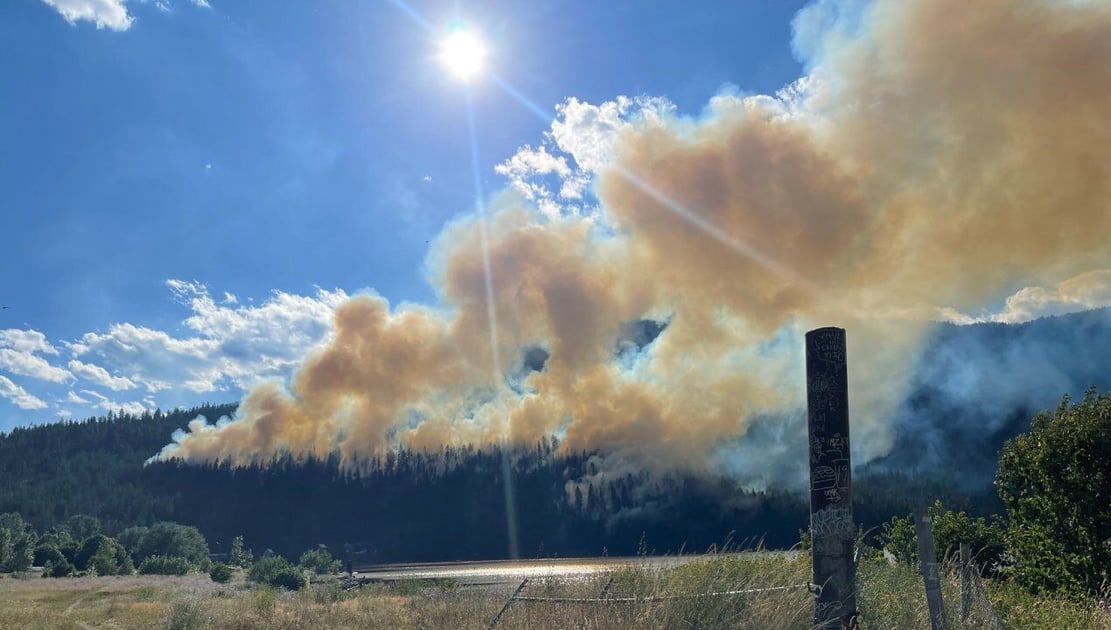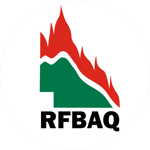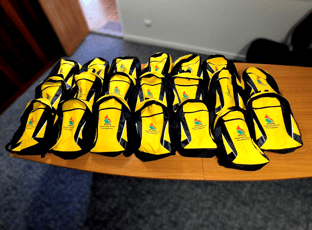Disaster Management and Other Legislation Amendment Bill
Yesterday the changes to the fire service act were read for the first time in Parliament.


During the (Australian) winter of 2024, many Qld Rural firefighters volunteered to be deployed to Canada (their summer) as Arduous Firefighters. For these volunteers, that meant:
Savanna Terrar, a Brigade Support Officer in Northern Region, was deployed as an Operations Branch Director. Her impressive deployment story follows.
I had the incredible opportunity to deploy to Canada as part of an international firefighting team. Alongside 15 fellow Australians and a few New Zealanders, I dove headfirst into the challenges of firefighting in British Columbia.
Firstly, a little information about Canadian wildfires. Firefighting in British Columbia, Canada, employs a variety of techniques, equipment, and specialized crews (known as packs) , reflecting the unique challenges posed by the region's diverse landscapes and climate. Given BC's vast forests and mountainous terrain, wildfires are a significant concern, requiring both ground and aerial firefighting methods. One of the primary techniques used in wildfire management is the establishment of firebreaks or controlled burns. Firebreaks are created by clearing vegetation to prevent the spread of fire, while controlled burns help reduce fuel loads in a safe and controlled manner. Fire crews also utilize backburning, where firefighters set small fires in the path of an advancing wildfire to consume available fuel, ultimately minimizing its spread. In terms of equipment, BC firefighting relies on various specialized tools and machinery. Firefighters utilize hand tools like axes and shovels for manual line construction, along with larger equipment like bulldozers and fire trucks for both suppression and support. Aerial resources are critical in BC, with water bombers and helicopters equipped to drop water or fire retardants on active fires. Drones are increasingly used for reconnaissance, offering real-time data and surveillance to enhance operational planning. The structure of firefighting crews is designed to address specific needs during emergencies. Ground crews, often called "hotshot" crews, are trained for intense wildfire combat, while initial attack crews respond quickly to new fires. Helicopter and aerial support crews operate aircraft to assist ground operations, and incident management teams coordinate logistics and strategy. Additionally, community wildfire prevention teams engage locals in education and preparedness efforts, fostering resilience against wildfires. Overall, the combination of techniques, equipment, and specialized crews demonstrates BC's commitment to effective wildfire management.
British Columbia experiences significant wildfire activity, influenced by its climate, geography, and ecosystems. Here are some interesting facts about wildfires in the province:
My role as Operations Branch Director placed me at the helm of our crew, akin to a divisional commander, and I was eager to contribute my experience and learn from my new friends. Our deployment began in Chilliwack, a picturesque town nestled in the heart of British Columbia. Here, we attended a briefing that included essential training, one of which was how to fight bears—a skill I never thought I’d need, but thankfully didn’t unlike the section on wasps which was very much so. With laughter, we absorbed the instructions, realizing that our mission was not just to combat flames but to embrace the surroundings.
From Chilliwack, we mobilized to the Slocan Valley, where we encountered our first significant wildfire. This blaze, raging through the mountains, was the size of 10,000 football fields, a daunting sight that underscored the scale of our task. My first assignment involved constructing a fire guard—essentially a fire break—500 meters up from the mountain's base. Thanks to the hard work of my incredible crew, we managed to create a 14.7-kilometer-long guard (fire break) using both heavy equipment and traditional hand tools. One of the most rewarding aspects of this mission was working alongside my team. While I’d like to think I imparted a few lessons (perhaps sharing my Aussie sense of humour was one of them), in reality, I learned so much from them, and was honoured to work with and learn from the incredible Salish Nation Fire Crew (an incredibly knowledgeable first nations 20 pack-crew of 20), and the incredible Katherine Grahn, the most talented and funny firefighter/divcom I have ever worked with. I gave her the Aussie nickname of ‘Weapon’ because that is just exactly what she was, a Weapon!
The synergy we developed was impressive and truly enhanced our efficiency in the face of adversity. In addition to our fire guard, we focused on structure protection, an essential aspect of our operations where we deployed sprinklers on roofs to mitigate fire threats. This method has proven to be incredibly effective, and it was gratifying to witness its positive impact. Throughout our time there, the fire was held at bay with a combination of bucket drops and direct attacks The human aspect of the operation was equally significant. We ended up evacuating the town while ensuring its safety. RCMP (Royal Canadian Mounted Police) actually deploy teams of police during fires, protests and other extreme events. This leaves local police to deal with BAU and provide local knowledge to the deployed staff. Seeing the sense of relief on the faces of residents when they could return home was rewarding and reinforced our purpose.
Ultimately, due to our efforts, no properties were lost, and a backburn from our guard was successfully carried out weeks after I left. However, my journey didn't end there. After two weeks in the Slocan Valley, I was assigned to tackle a second fire in the breathtaking Rocky Mountains. Upon my arrival, I quickly learned that due to a lack of available crews, I would need to monitor and plan the attack for two separate fires—the Ravenshead and the Mt. Morro fires. For the next two days, I flew with my helicopter pilot for up to six hours daily. We scoured the terrain, not only mapping the fires but also keeping an eye on livestock that ranchers couldn't access due to the restricted area. It was crucial to ensure that ranchers could relax, knowing their herds were safe. During these flights, I began the line location process, identifying prime spots for fire guards.
I was delighted when additional crew members finally arrived, but the hard work was just beginning. The dozens of crew where of mixed crew types and skill sets. I was consistently amazed by their strength, training, and zest for life. Working alongside them, I coordinated with danger tree assessors and specialists to evaluate and open approximately 40 kilometres of forest roads. This preparation was necessary to move the crew into strategic positions for direct attacks on the fires and for creating fire guards. In Canada, a significant concern for firefighters is the threat of falling trees, especially in wildfire conditions where trees can become unstable. The term "danger trees" refers to trees that are dead, dying, or leaning and pose a risk to firefighters’ safety. In fact, statistics indicate that falling trees are one of the leading causes of injuries and fatalities among firefighters in Canada. It is crucial for teams to conduct hazard assessments before entering areas at risk. In total, there are about 600,000 hectares of forest annually impacted by wildfires in British Columbia alone, highlighting the scale of the problem. The dangers for firefighters extend beyond just flames; hazardous conditions, extreme weather, and falling trees can all create life-threatening situations. This aspect of firefighting instilled a greater respect for the environment in which we were operating.
Saying goodbye after two weeks at the Slocan fire was bittersweet, but my experiences at the Ravenshead and Mt. Morro fires left an indelible mark on me. I formed deep bonds with my crew, especially with the danger tree teams and Shasta the incredible team leader that assisted me in a challenging medical helicopter extraction.
I loved learning new firefighting techniques and tactics while sharing our mutual experiences and humour. Driving the giant trucks (or Utes, as we call them in Australia) on the right side of the road was an experience in itself. Learning the quirks of four-way give-way intersections proved tricky to navigate, but it became a humorous ordeal shared with my new mates. I’ll admit I won’t miss how hazard lights in Canada seem to act as a suggestion to overtake, rather than an actual warning of an incident!
This deployment highlighted the universal and critical role of firefighters. With the 2024 bushfire season at our doorstep, the expertise and dedication of firefighters across Canada will be indispensable to myself and all of those who were deployed with me, bolstering the response capabilities with our new perspective on bushfire/wildfire fighting.
These professionals (both paid and unpaid) take on enormous challenges each year, particularly given the increasing frequency and intensity of wildfires fuelled by climate change. My time in Canada was a blend of hard work, laughter, and valuable learning. From mastering bear safety to protecting communities, this deployment sharpened my skills and enhanced my appreciation for teamwork in firefighting.
As I reflect on the experience, I am grateful for the friendships forged and the knowledge acquired—lessons that I will carry with me in my future endeavours. British Columbia's wilderness may be imposing, but the resilience and unity shown by those who fight its fires are even more formidable. Together, we faced unimaginable challenges, always remembering that we were not just saving properties but protecting homes and communities. And for that, I am truly grateful.
Savannah Terrar
Brigade Support Officer - Wet Tropics – RFSQ - QFD
Thank you Savannah, and thank you to all who volunteered. It is a testament to the professionalism of Queensland Rural firefighters that so many qualified Arduous Firefighters volunteered so quickly to help our Canadian friends.
Browse through Savannah's amazing photos below!


Yesterday the changes to the fire service act were read for the first time in Parliament.


Good luck to the 20 Rural Fire Brigade volunteer firefighters who are deploying to Canada this...